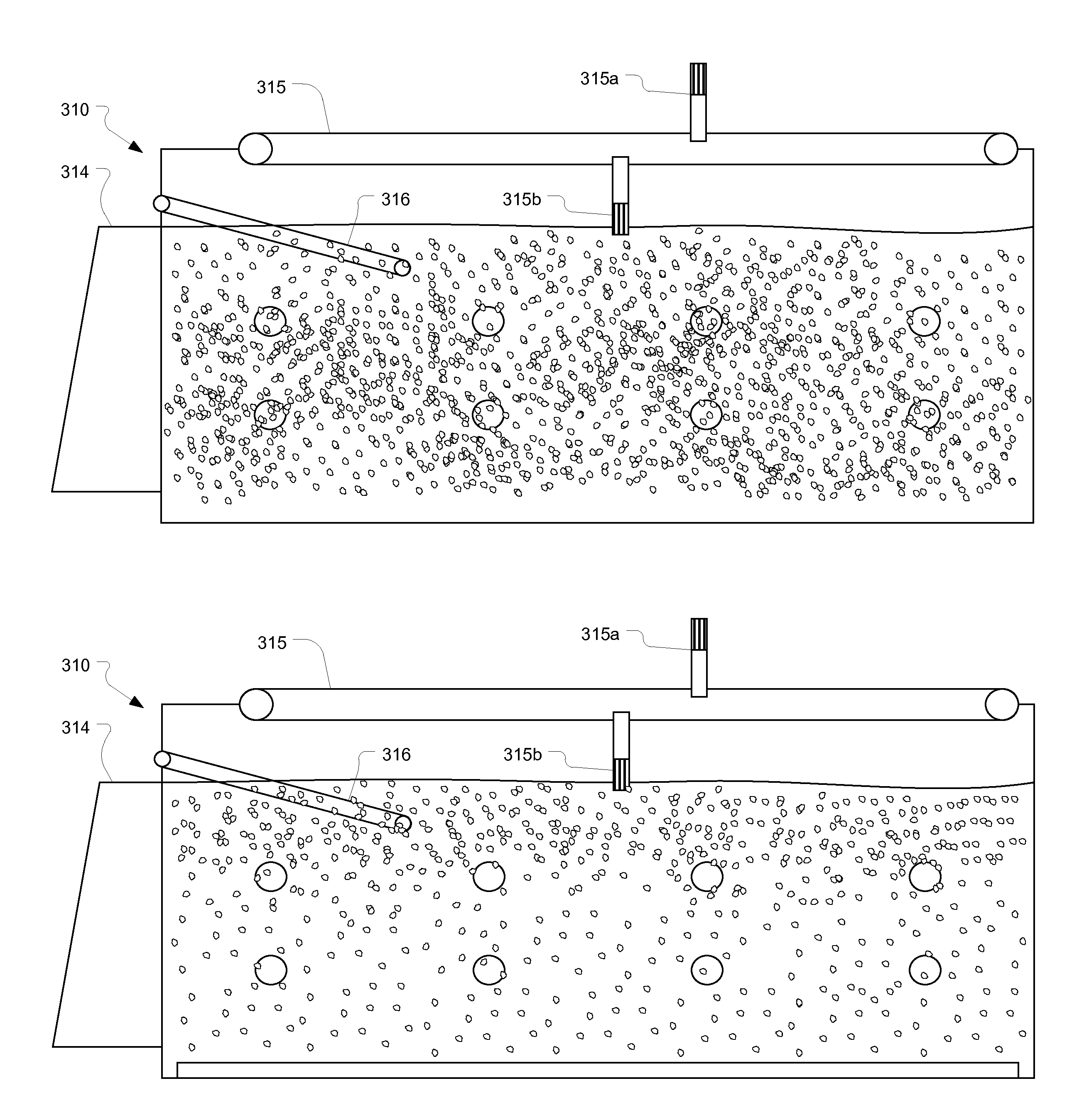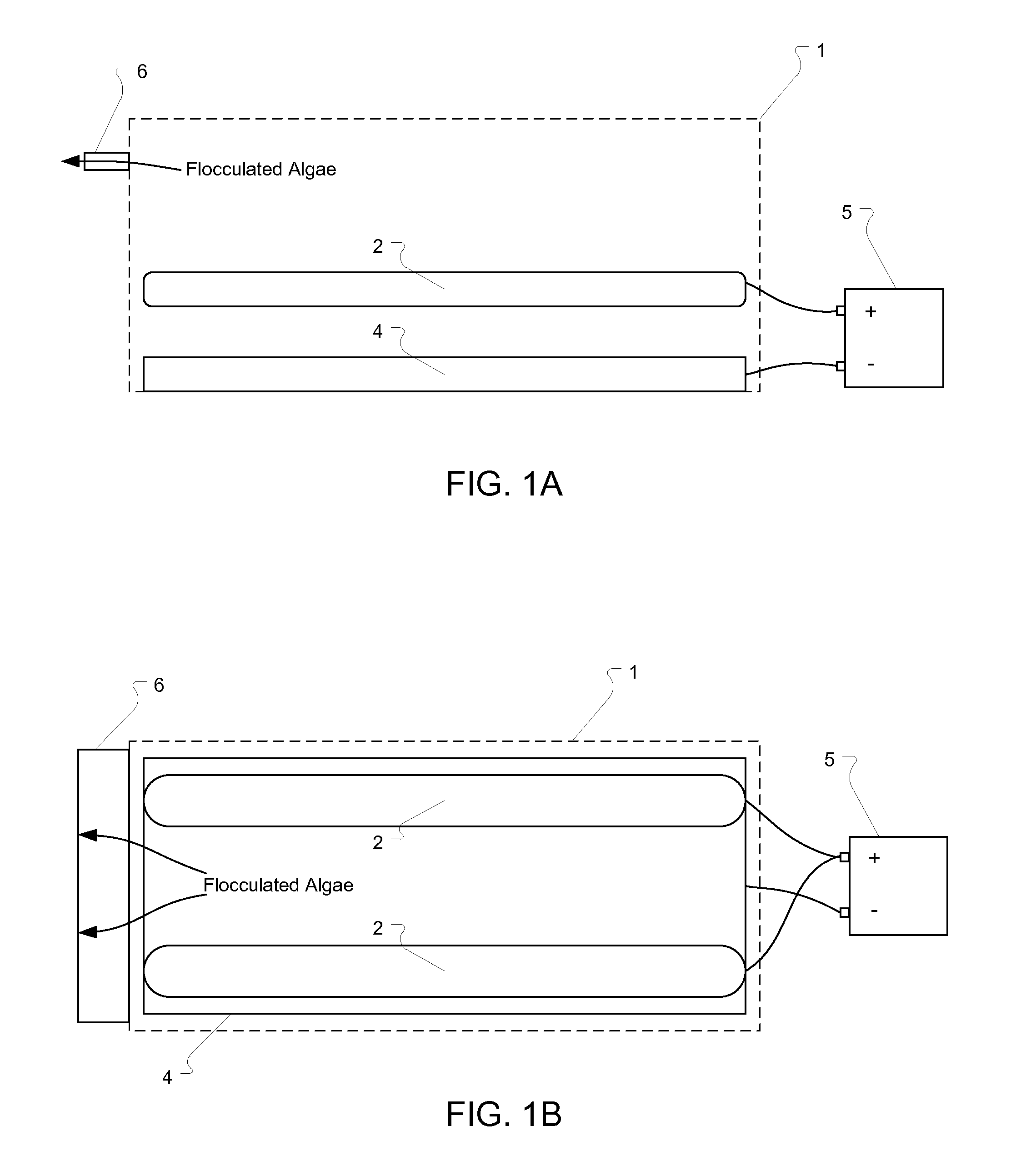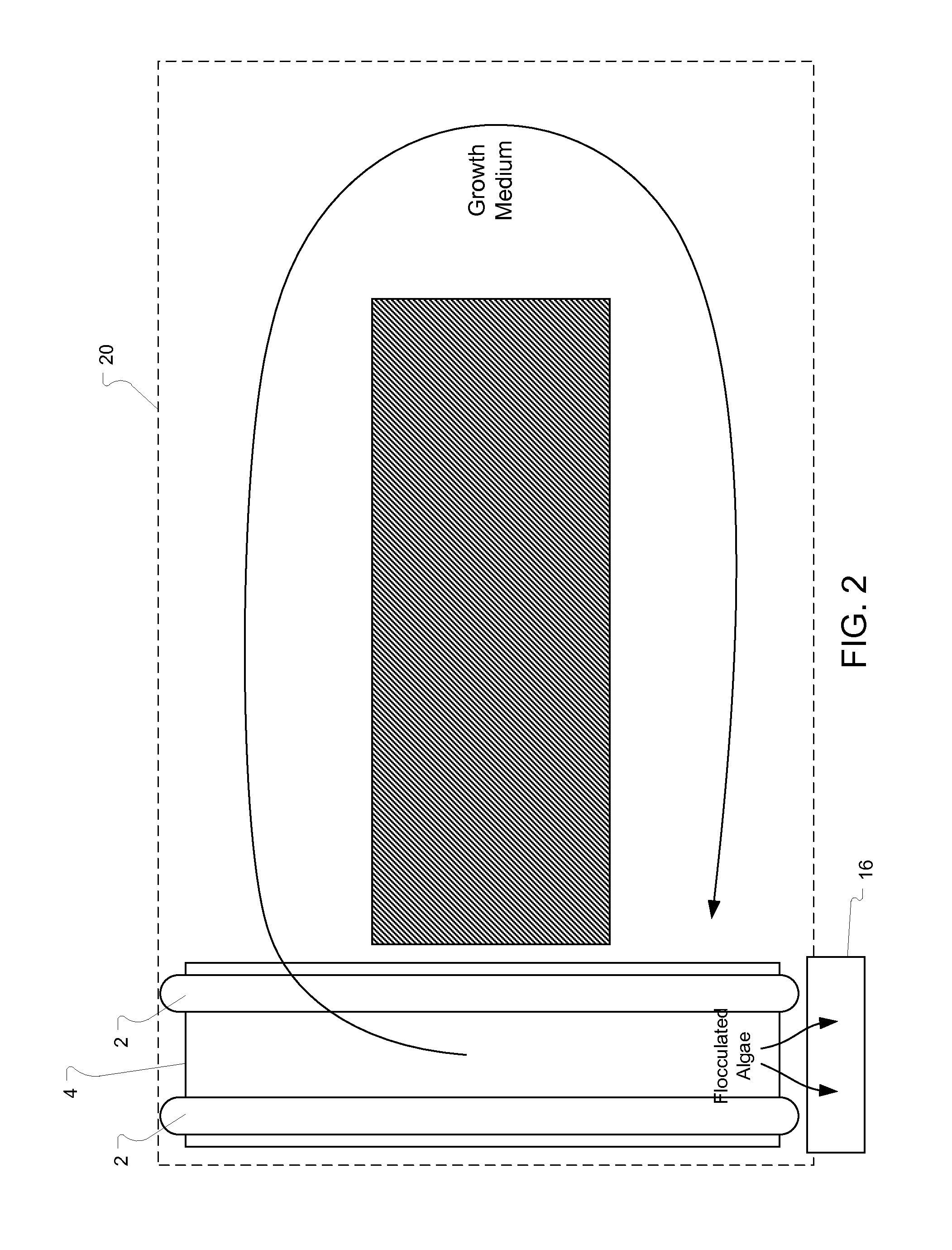Systems and methods for harvesting and dewatering algae
a technology of algae and system, applied in the field of algae harvesting and dewatering systems, can solve the problems of inability to effectively use high-energy electro-flocculation systems for extended periods of time, inability to preserve the integrity of the mass, and inability to effectively use high-amperage technology, etc., to achieve low cost, simple approach, and reduce the cost of flocculation
Inactive Publication Date: 2013-08-01
ORGINOIL INC
View PDF5 Cites 20 Cited by
- Summary
- Abstract
- Description
- Claims
- Application Information
AI Technical Summary
Benefits of technology
[0013]The present invention is generally directed to systems and methods for harvesting algae using a simple, low cost approach. Implementation of the invention produces a biomass that can then be lysed for oil separation while returning clarified nu
Problems solved by technology
Therefore, efforts in algae eradication usually does not include preservation of the integrity of the mass for further uses such as pharmaceutical or other high value feedstock.
These metals are extremely effective at precipitating solids out of solution; however, they taint the product and the water itself with an inorganic chemical that then must be removed or otherwise processed in the tertiary waste treatment phase.
Due to the sheer size of the plants and Ohms law (I=V/R) the current requirement and the scale of the process, it is not practical to utilize high-energy electro-flocculation systems for extended periods of time.
Furthermore, the deterioration and scaling of electrolytic plates operating at high current for extended periods of time precludes the effective use of this technology at high amperage.
Current extraction methods used for harvesting microorganisms such as algae to ultimately yield products for use as fossil oil substitutes are laborious and yield low net energy gains, rendering th
Method used
the structure of the environmentally friendly knitted fabric provided by the present invention; figure 2 Flow chart of the yarn wrapping machine for environmentally friendly knitted fabrics and storage devices; image 3 Is the parameter map of the yarn covering machine
View moreImage
Smart Image Click on the blue labels to locate them in the text.
Smart ImageViewing Examples
Examples
Experimental program
Comparison scheme
Effect test
 Login to View More
Login to View More PUM
 Login to View More
Login to View More Abstract
An applied electrical field effects the harvesting of algae from a growth medium through increased interface potential between solvent and solute and the use of micron-sized bubbles of hydrogen and oxygen gas. The process and method makes use of strategically placed bipolar electrode plates that generate hydrogen and oxygen gas. Micro bubbles of the gas flocculate the biomass out of solution concurrently clarifying the water for re-use in an algae growth system. The flocked algae can then be processed for use in applications which require a chemical-free and dewatered product such as required for bio-fuels, pharmaceuticals or food.
Description
CROSS-REFERENCE TO RELATED APPLICATIONS[0001]This application claims priority to U.S. Provisional Patent Application No.: 61 / 592,522, filed Jan. 30, 2012, titled Systems And Methods For Harvesting And Dewatering Algae.BACKGROUND[0002]There is a history of separating materials from liquid suspension in several industries, including the wastewater treatment industry and algae farming industry. Processes involved in achieving separation can vary, along with the desired end result. For example, in the wastewater treatment industry, the desired result is typically treated water that can be released into the environment. In contrast, in the algae farming industry, the primary desired result may be the harvest of a usable biomass for energy production.[0003]There is a long history of electro-flocculation in the wastewater industry. It has been found to be an effective method of separating solids from fluids in the secondary stage of remediation. This waste stream contains organic material ...
Claims
the structure of the environmentally friendly knitted fabric provided by the present invention; figure 2 Flow chart of the yarn wrapping machine for environmentally friendly knitted fabrics and storage devices; image 3 Is the parameter map of the yarn covering machine
Login to View More Application Information
Patent Timeline
 Login to View More
Login to View More IPC IPC(8): A01G7/04A01H13/00
CPCC02F1/463A01G7/04A01H13/00A01G33/00C12N13/00C02F11/006C12M21/02C12M33/00C12N1/02C12M47/02Y02A40/80
Inventor ECKELBERRY, NICHOLAS
Owner ORGINOIL INC
Features
- R&D
- Intellectual Property
- Life Sciences
- Materials
- Tech Scout
Why Patsnap Eureka
- Unparalleled Data Quality
- Higher Quality Content
- 60% Fewer Hallucinations
Social media
Patsnap Eureka Blog
Learn More Browse by: Latest US Patents, China's latest patents, Technical Efficacy Thesaurus, Application Domain, Technology Topic, Popular Technical Reports.
© 2025 PatSnap. All rights reserved.Legal|Privacy policy|Modern Slavery Act Transparency Statement|Sitemap|About US| Contact US: help@patsnap.com



